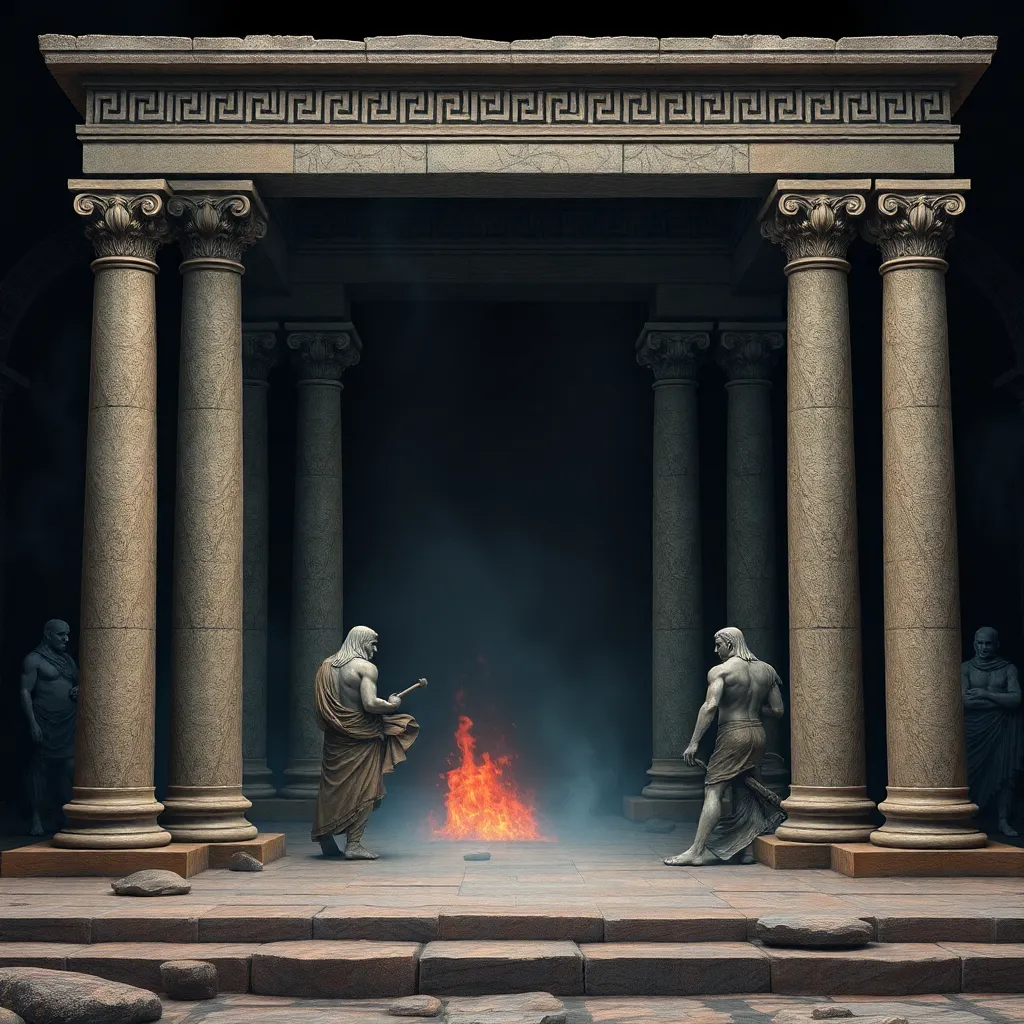Hades and the Underworld: A Comparative Study with Other Cultures
I. Introduction
In Greek mythology, Hades is not only a god but also the name of the realm of the dead. The concept of the Underworld is rich with symbolism and reflects the ancient Greeks’ beliefs about death and the afterlife. Understanding Hades and the Underworld provides insight into how different cultures perceive mortality and what lies beyond.
Comparative mythology serves as a vital tool in revealing the cultural perspectives on death and the afterlife. By examining the Underworld across various civilizations, we can uncover shared themes and significant differences that illuminate the values and beliefs of each society.
This article aims to explore Hades and the Greek Underworld in detail and compare these concepts with similar beliefs in Egyptian, Norse, Mesopotamian, and Eastern philosophies.
II. Hades: The Greek God of the Underworld
Hades, the brother of Zeus and Poseidon, is often misunderstood as a malevolent figure. In reality, he is a complex deity who presides over the realm of the dead with a sense of order and justice.
- Origins and Characteristics: Hades is often depicted with a scepter or a key, symbolizing his authority over the Underworld. His name is associated with wealth, as the earth is believed to hold precious minerals and resources.
- Role in Myths: Hades plays a crucial role in various myths, such as the abduction of Persephone, which illustrates themes of love, loss, and the changing seasons.
- Structure of the Underworld: The Greek Underworld is divided into several regions, including the Elysian Fields for the virtuous, Tartarus for the wicked, and the Asphodel Meadows for those of average deeds.
III. The Underworld in Ancient Egyptian Mythology
In contrast to the Greek Underworld, ancient Egyptian beliefs about the afterlife are centered around Osiris, the god of resurrection and the afterlife.
- Overview of Osiris: Osiris is often depicted as a mummified king, representing eternal life. He governs the realm of the dead, where souls are judged.
- The Journey of the Soul: Upon death, souls journey through the Duat (the Egyptian Underworld) and face the judgment in the Hall of Ma’at, where their hearts are weighed against a feather.
- Comparison of Themes: Unlike Hades, whose realm is often seen as a final destination, the Egyptian concept emphasizes rebirth and resurrection, highlighting a more optimistic view of the afterlife.
IV. The Underworld in Norse Mythology
The Norse Underworld presents a different perspective altogether, with the realm known as Hel, ruled by the being of the same name.
- Description of Hel: Hel is often depicted as a half-living, half-dead figure, symbolizing the duality of life and death. The realm itself is a cold, dreary place for those who did not die heroically.
- Differences in Perspective: In Norse belief, those who die in battle ascend to Valhalla, while others are sent to Hel, highlighting a more meritocratic vision of the afterlife.
- Moral Implications: The journey to Hel is less about punishment and more about the inevitability of death, reflecting the Norse acceptance of fate and destiny.
V. The Underworld in Mesopotamian Mythology
The Mesopotamian view of the Underworld is depicted through various deities and beliefs that emphasize a rather gloomy afterlife.
- Overview of the Underworld: The Sumerian and Babylonian Underworld, known as Kur or Irkalla, is a dark and dreary place where all souls go, regardless of their actions in life.
- Role of Deities: Ereshkigal, the queen of the Underworld, and Nergal, her consort, govern this realm, emphasizing a strict hierarchy among the dead.
- Comparison of Afterlife Experience: Unlike Hades, where souls are judged and placed accordingly, the Mesopotamian Underworld is more uniform, reflecting a belief in the inevitability of death.
VI. The Underworld in Eastern Philosophies
Eastern philosophies, particularly Hinduism and Buddhism, offer unique perspectives on the afterlife and the soul’s journey.
- Hinduism: The god Yama presides over the dead, while Naraka represents a place of punishment. However, the primary belief revolves around reincarnation, where the soul is reborn based on its karma.
- Concept of Reincarnation: This cyclical view of life contrasts sharply with the Greek belief in a final judgment and destination in Hades.
- Buddhism: The Buddhist perspective emphasizes karma and the cycle of rebirth, ultimately aiming for enlightenment and liberation from suffering, differing significantly from the static nature of the Greek Underworld.
VII. Common Themes and Divergences
Throughout various cultures, certain themes emerge while others diverge significantly, revealing the complexity of beliefs surrounding the Underworld.
- Shared Themes:
- Judgment: Many cultures incorporate some form of judgment, reflecting societal moral values.
- Reward and Punishment: The consequences of one’s life choices often dictate the afterlife experience.
- Cultural Divergences:
- The Greeks emphasize a more personalized afterlife, while Egyptians focus on rebirth.
- Norse beliefs celebrate valor in life, contrasting with the more uniform experiences in Mesopotamian views.
- Influence of Societal Values: Each culture’s portrayal of the Underworld reflects its values, such as the Greeks’ focus on heroism, the Egyptians’ emphasis on morality, and the Norse acceptance of fate.
VIII. Conclusion
This comparative study of Hades and the Underworld across different cultures reveals both commonalities and significant distinctions in how societies view death and the afterlife. Each culture’s mythology reflects its values, fears, and hopes regarding mortality.
Understanding these diverse perspectives is crucial for appreciating how humanity grapples with the concept of death. As modern society continues to explore these themes, the impact of mythology remains evident, shaping contemporary views on life, death, and what may lie beyond.




